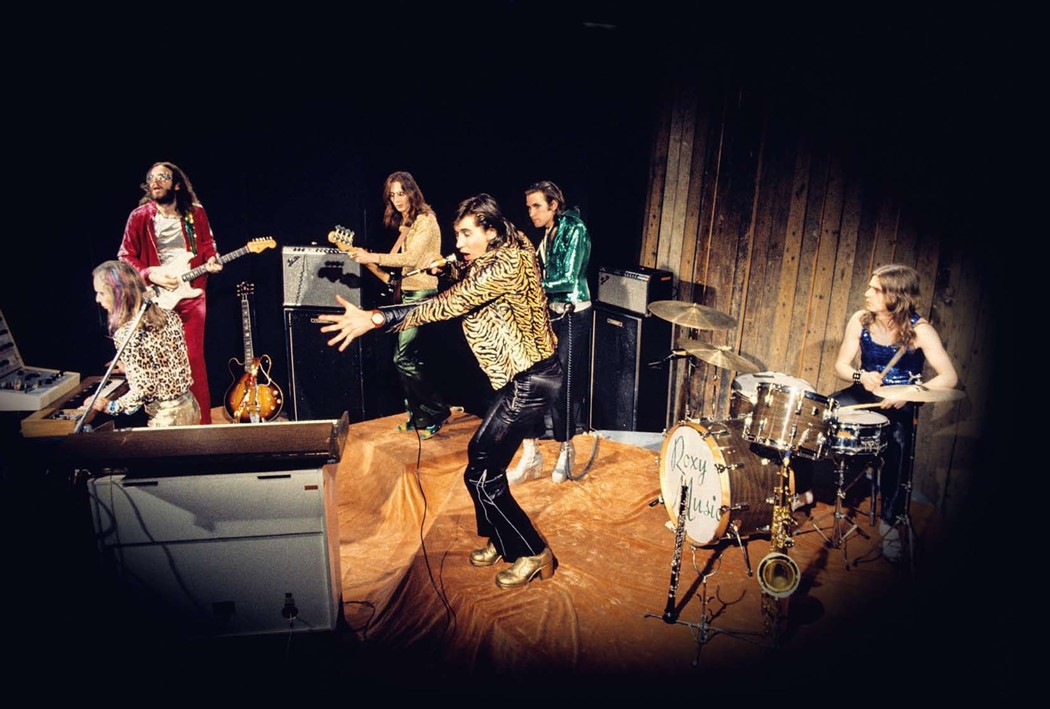The Designer Who Crafted Roxy Music’s Boundary-Breaking Look
- TextSusanne Madsen
Described as ‘the most criminally overlooked designer in British fashion’, Antony Price put the ‘glam’ in ‘glam rock’. Speaking to Susanne Madsen, he reflects on his era-defining collaboration with Roxy Music
In 1972, Roxy Music released a self-titled album that would change the course of pop culture forever. 45 years on, the band are re-releasing this album and, with it, a stream of previously unreleased demos, outtakes, radio sessions, rare footage and a 136-page book. To celebrate, we’re devoting the next 24 hours to Roxy Music, presenting a series of articles curated in collaboration with the band.
If you’re a stylist or art director in the music industry today, send a very grateful thought to Antony Price. (Or possibly a thank-you card.) The designer’s fearless work with Roxy Music not only completely changed the image of rock into something altogether more, ahem, glam, but also paved the way for how fashion and music have become intrinsically linked. Had the era been slightly different, Price would no doubt have been inundated with offers at the time to back his eponymous occasionwear label – or handed the keys to a Paris couture house.
“I love music. I was often called the hidden member of the band. The fans thought the part I played was really quite important for them,” Antony Price says, on the phone from his home and studio in the countryside where he’s working on new season pieces for his eponymous collection. Price himself may credit Elvis Presley with putting music onto a more carefully stylised path and name-check him in the look he dreamed up for Roxy Music – a sexed-up 50s-meets-future master lesson in the virtues of deliberately, gloriously artificial image making – but there’s just no denying how utterly seminal his work is.
Credited on Roxy Music’s debut album for “clothes, make-up & hair”, Antony Price was pivotal in making Bryan Ferry’s ideas come to life through his hyper-confident aesthetic that seamlessly complemented their sound. Their fashion plate album covers are seared onto our collective retinas, from Amanda Lear’s dangerous, plasticised curves to the ultimate femme fatale: a siren Jerry Hall crawling predator-like across the rocks. Designer, art director, stylist, hair and make-up artist, photographer – Price is a true Renaissance man.
Price and Ferry understood the power of visuals. Their currency was fantasy and glamour, with nothing left to chance. Price, a master of the knowing, empowered take on ‘sex sells’, was all about equal opportunity objects of desire with his exaggerated silhouettes: the women were pin-ups but so was Ferry, arguably, and the rest of the band in their bulge-sculpting trousers. Price made the suit sexy, similar to the way uniforms are considered, but his sickly colours and slick surfaces also pushed it into the slightly ‘wrong’ – that most modern of territories – before carefully balancing it back again into desire with his fetishised take on Old Hollywood glamour.
To say he was ahead of his time is an understatement, and you can see his handwriting in the work of so many designers. He is, as AnOther’s Editor Alexander Fury has aptly noted, “an unparalleled master of modern made-to-measure occasionwear and the most criminally overlooked designer in British fashion.”
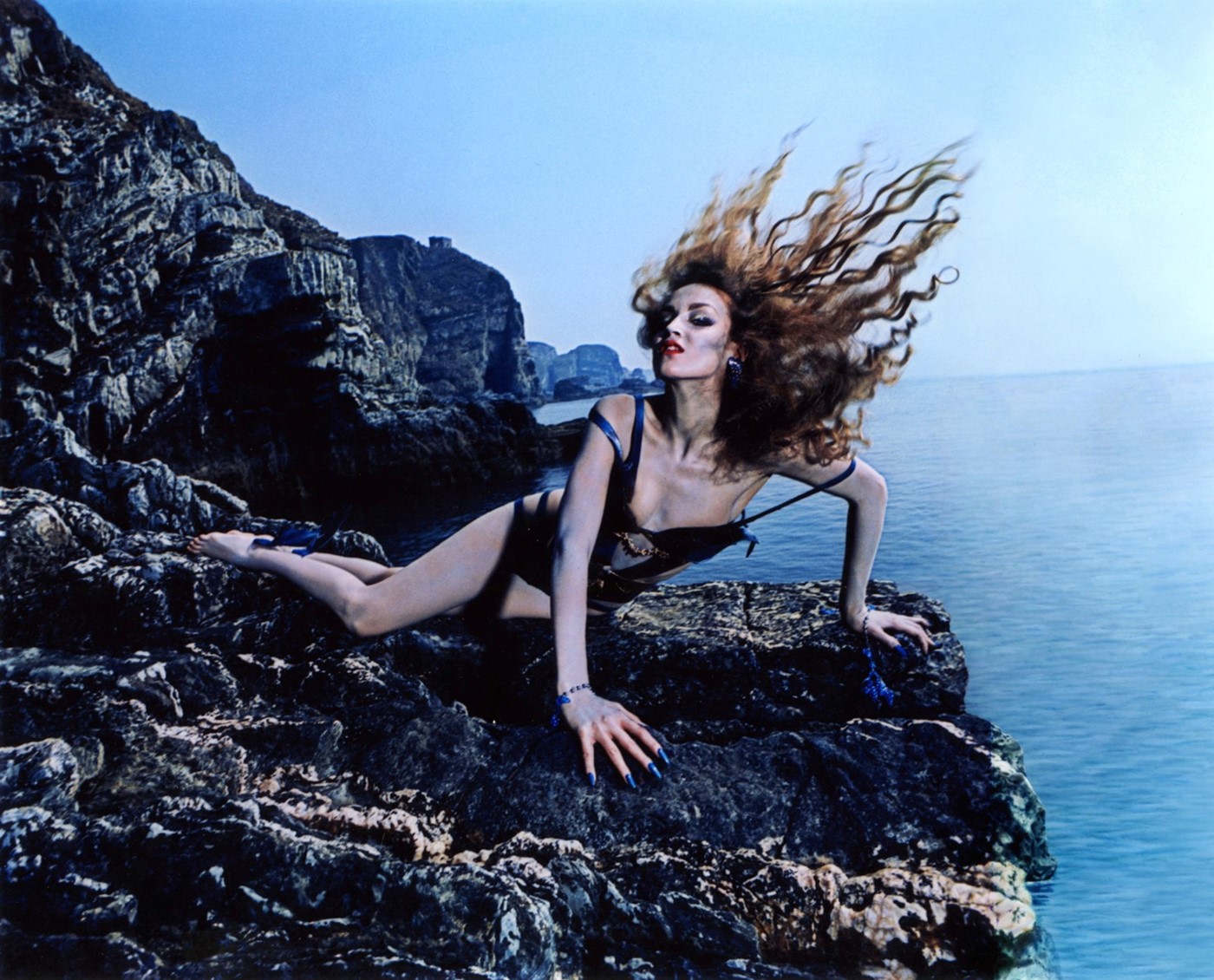
Born in Yorkshire and brought up in the Yorkshire Dales, Price was taught pattern cutting at the Bradford School of Art before going on to the Royal College of Art – six years in total doing womenswear, and one doing menswear for his final year at RCA in 1968. After that came his work for the Stirling Cooper shop, frequented by Mick Jagger, followed by the Che Guevara and Plaza boutiques: all meticulously designed to stage his collections during the 70s.
What Price did with Roxy Music and under his own label, though, was a blueprint for the 80s before the 80s. “But no one thanks you for being before your time. They thank you for being bang on time. And that unfortunately has been my story. And in many cases, Bryan’s too. To be so right but to an audience that isn’t quite ready yet. But we did get a lot of people. And there’s Bryan, he’s still creating things. So am I.”
Another Man: Have you seen the new Roxy Music book?
Antony Price: I’ve seen the book. It’s fabulous. It’s a masterpiece of editing, with masses of photographs from backstage, shoots and things leading up to it. I was in the car driving down there [to Bryan Ferry’s house] on New Year’s Eve and I got to the gate, put in the code, and I was giggling and laughing to myself, thinking what fun we had. And I came in and I said to him, ‘I was thinking to myself today what fabulous fun we had at the beginning. And how fantastic it was. And how hysterical it was.’ And he said ‘yeah’, and then he put this book in front of me. I couldn’t believe it. This is what I was thinking about, all the way down.
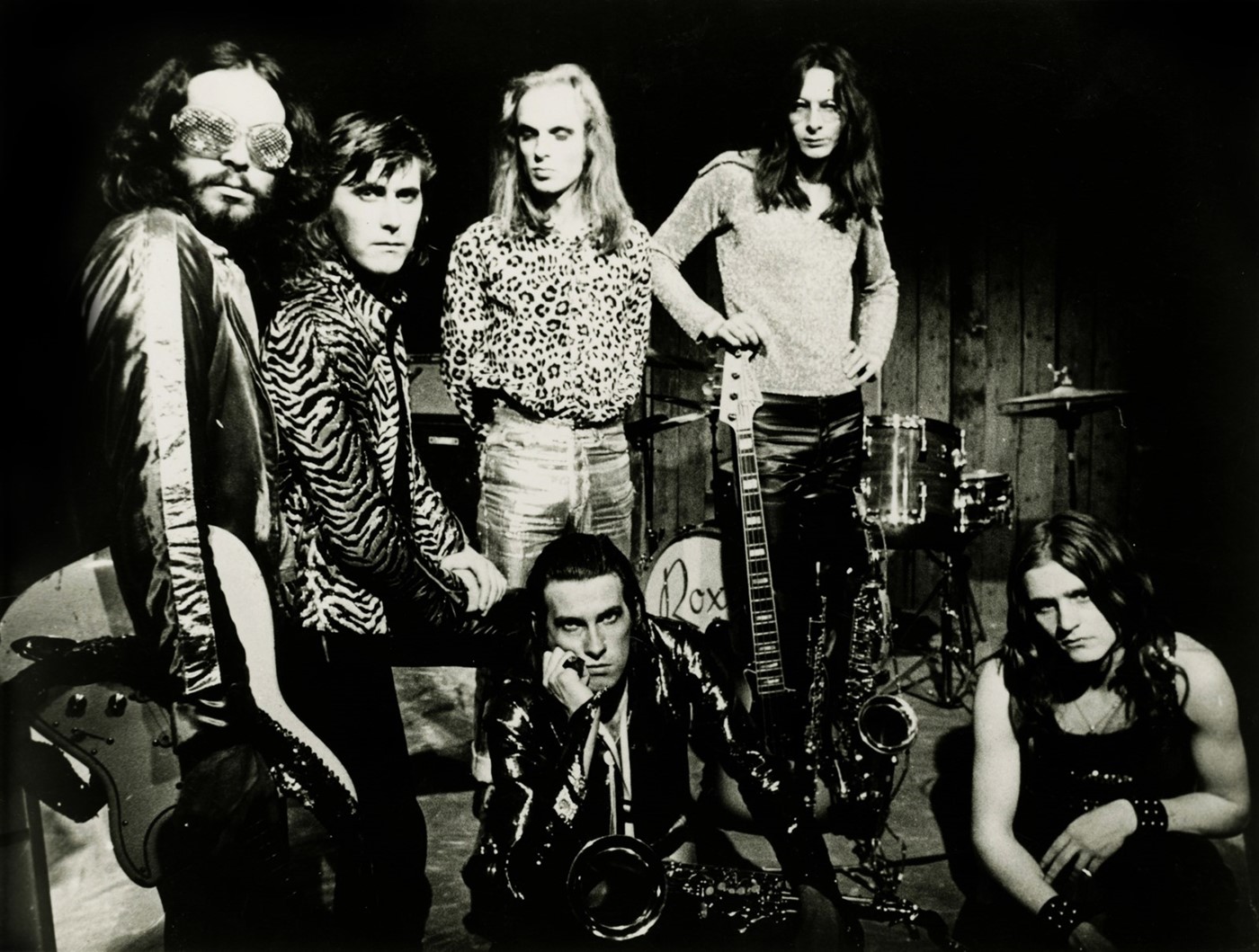
AM: What was the relationship between fashion and music like back when you first started working with Roxy Music?
AP: I was literally laughed out of court by the fashion business for fiddling with rock. Because to them it was crimpy-haired men where you could see their religion through their blue satin trousers. And we came along with a completely different vision.
AM: What was the collaborative process with Bryan Ferry like?
AP: We’d spend a lot of private time together. We’d go off for weekends to stay with people and what have you, we’d fantasise and look at things and watch films. We’d do it within the parameters of what he liked. It evolved between us what we were going to do. The feeling of the music, what it inspired. It reached major fruition I would say when we got to about 1975 when I was doing sets and some lighting and we did Jerry [Hall] and the Siren cover. Got this new girl over from Paris, sharing a flat with Grace Jones.
AM: So tell me about the shoot for the debut album.
AP: This album, I did make those clothes for Kari-Ann. It was meant to look like a Neapolitan ice cream. And I did Bryan’s hair for that shot. I had learnt makeup and hair dressing in the early 60s. At the Royal College I was hairdressing everybody in the class, men and women. I used to cut [Bryan’s] hair. I’ve cut Mick [Jagger’s] hair. I’m well-known for being an all-rounder. I shot Boys and Girls. I’ve shot lots of pictures with Bryan. I’m not a bad photographer. The setup in front of it is what matters, isn’t it? Actually putting your finger on the shutter isn’t really what it’s about. [chuckles] If I couldn’t reach it Bryan would press it! Every album we did there’d be loads of drawings. We were a bit like Steven Spielberg. Everything would have been storyboarded. I used to storyboard lots of the videos. Oh, there are some fabulous ones. They look a bit camp now.
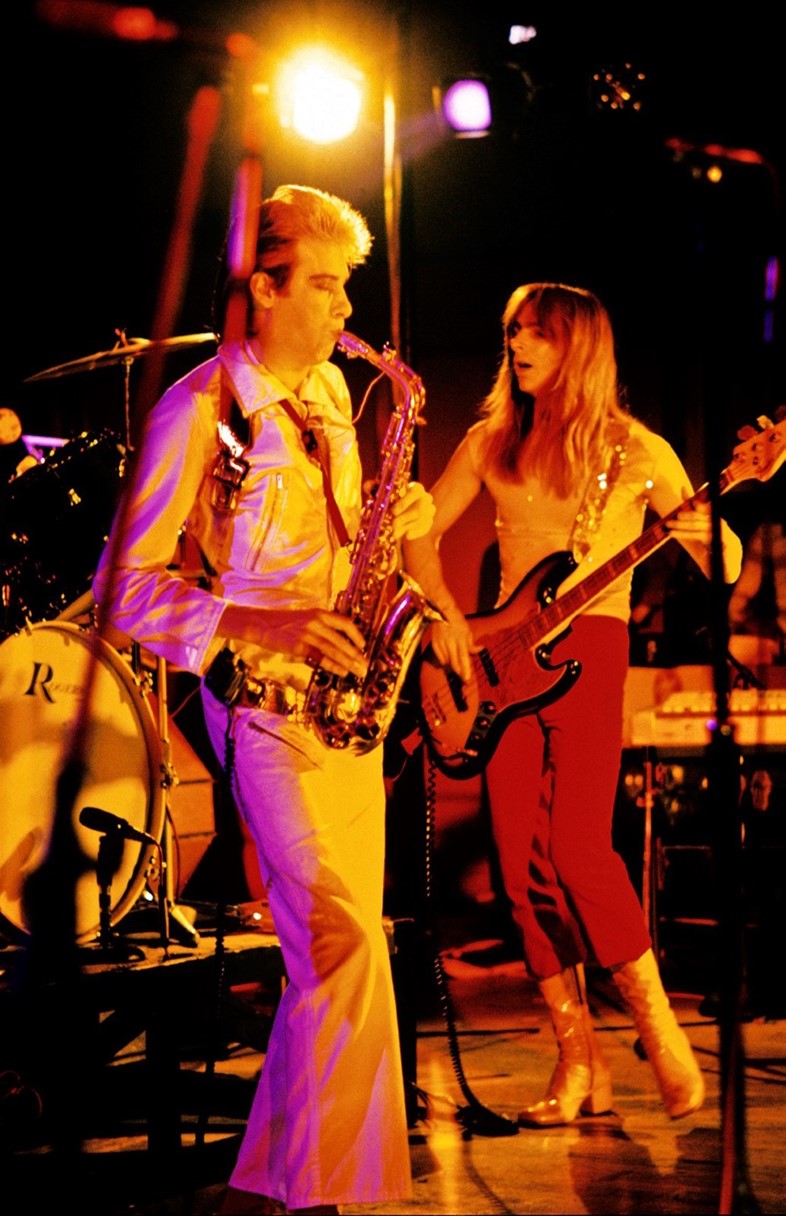
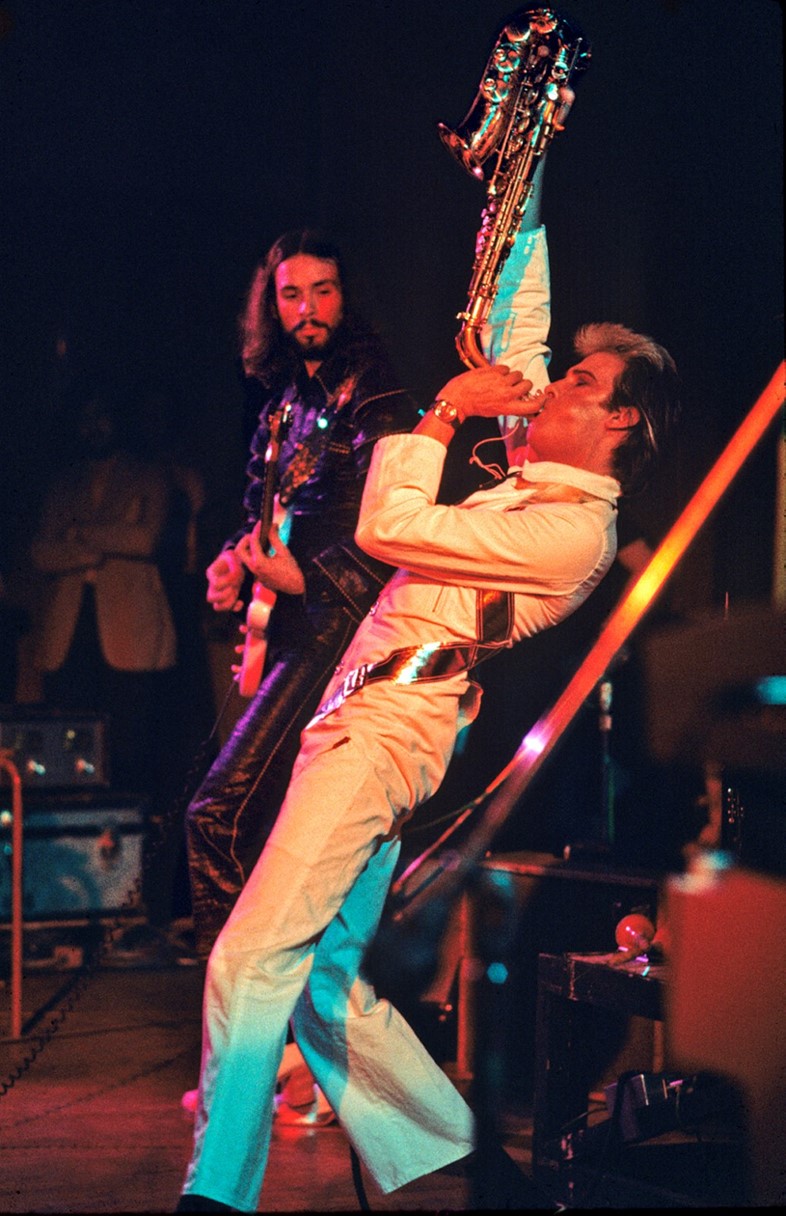
AM: Did you think of it as being camp back then?
AP: No, not really. They were the kinds of things that were going on everywhere around us. But taken out of context and plonked down, they look as 70s and 80s as it’s possible to be. Anything that’s of the moment is guaranteed to date, isn’t it?
AM: I’m really interested in your thoughts on the term ‘glam rock’.
AP: We didn’t call it that then. That’s a name given to it years later. We just thought it was good taste. We were actually – Bowie and us – the first to do it. And they were also the first artists who wanted to stay in plush hotels and not travel around in these stinky vans. They wanted a glamorous lifestyle and they also wanted glamorous women.
AM: What were the tours like?
AP: When I went on tour with them it was like as a band member almost. And it was always laughed at. I’d be overdressed in the evening. If anyone was going to get the bullet for the lead singer from a nutter it’d be me. [laughs] I wore [the stage costumes] out at night. I would have looked like the singer! ‘Cause Bryan would dress more sombrely. He’s a masculine, hetero man. I didn’t give a shit. I wanted to look extraordinary.
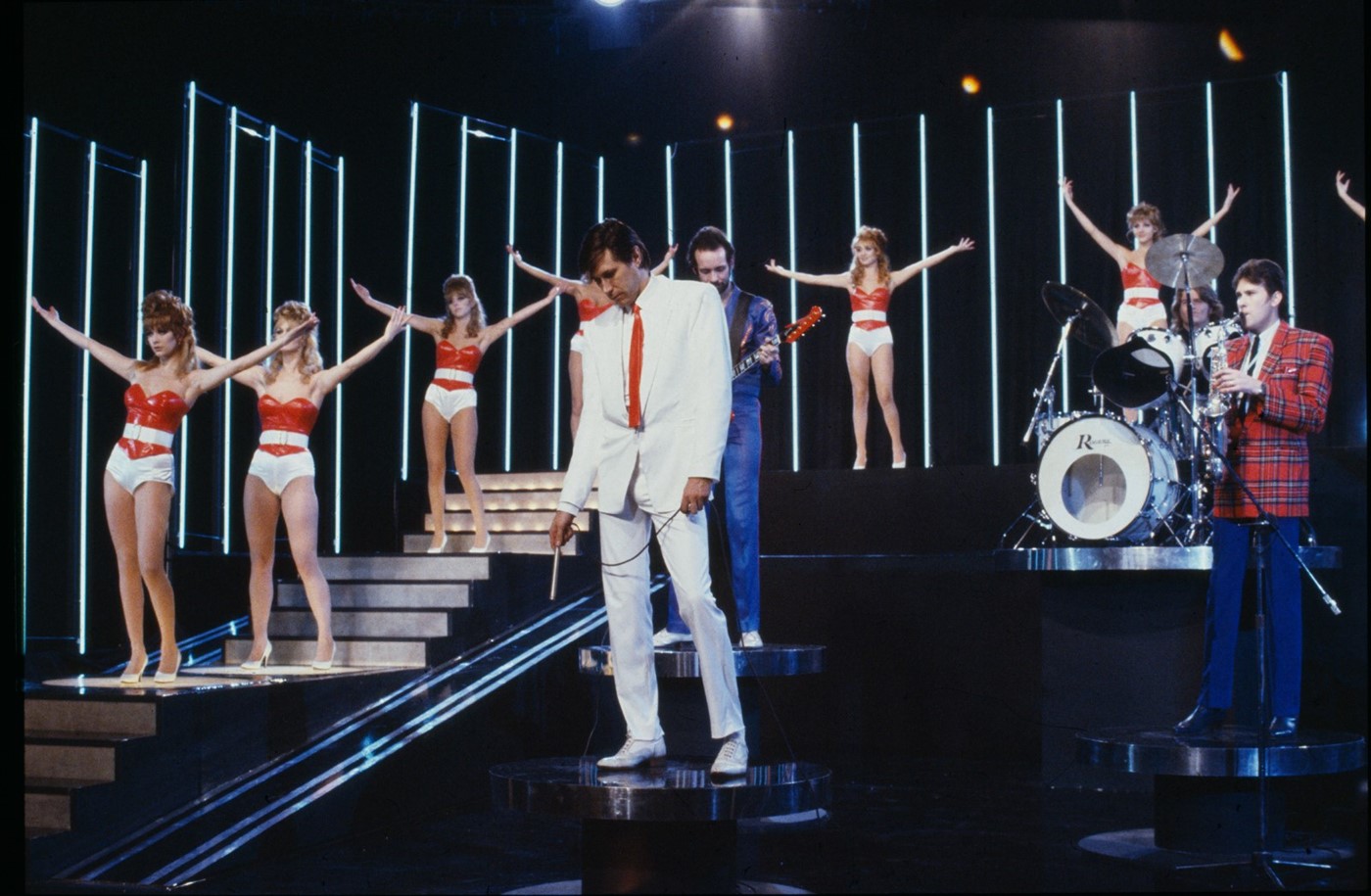
AM: What are some of your favourite Roxy looks?
AP: I liked the sort of military looks, with Roxy Music on the sleeves. The Siren tour, which is ‘75. Obviously I like the thing we did for Amanda. We had to draw in the black panther and we did [Bryan] as a chauffeur inside. We did all kinds of mad looks. One tour we did these sort of gaucho trousers with ropes. It was terribly Gilda with Rita Hayworth. We’d get all these mad ideas and go ahead and do it all and the fans would love it. They’d all be out wearing the outfit by the time we got to day two, after the first airing.
AM: I was looking at some of the spacesuits, these Martian outfits, from the early days.
AP: The nicest ones were the slimy ciré ones. I remember seeing him one night, with my set in an acid green ciré suit like leather, with a white shirt and a black tie. Gyrating in front of the microphone in a white spotlight to one of my favourite songs he does, which is Casanova. And the pillars behind him are purple, green and turquoise, with the lime green suit. Which is so bang-on now, this season.
AM: I suppose for some musicians all of these outfits would have been too ‘out there’.
AP: He completely understood. We thought as one by now. He was totally into fashion. He started off on the edge of it but he very soon was going to all the shows and everything. And completely understood the language of fashion. In fact, he understood it better than me. He was constantly telling me, why won’t you play the game? [Fashion] is a game I found difficult to play and fashion found me difficult to handle. I’m from hard salt of the earth stock and not ashamed of it. I don’t have pretensions.
Susanne Madsen is a freelance writer.
Roxy Music: The Debut Album 45th Anniversary Four Disc Super Delux Box Set will be released by UMC on February 2nd, 2018. Pre-order a copy here.
